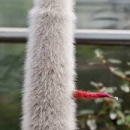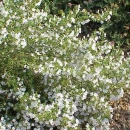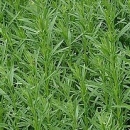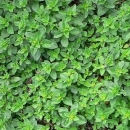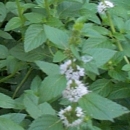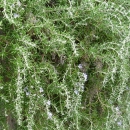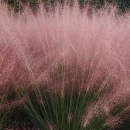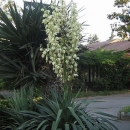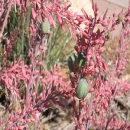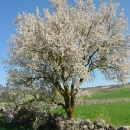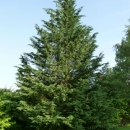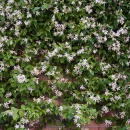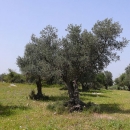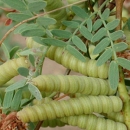Bermuda Grass Seed Frequently asked Questions and Answers

We receive questions about how to plant, grow and care for the different varieties of Bermuda grass seed that we offer. Listed below are the most commonly asked questions and our suggestions:
- What is the difference between hulled and unhulled Bermuda grass seed?
- What kind of seed would you recommend for our very hot desert climate?
- Can I improve my common Bermuda by over seeding with an improved turf type?
- What is the recommended seeding rate for new turf?
- When and where can I plant Bermuda grass?
- Should I cover the seeds after planting?
- How long does it take for Bermuda grass seed to germinate and establish a lawn?
- How much water and fertilizer is needed on a Bermuda grass turf?
- Is Bermuda grass salt tolerant?
- When can I mow my Bermuda grass, how high, and do I need a special mower?
- What about growing Bermuda in the winter and can I overseed?
Answers to the Above Questions About Bermuda Grass
-
The difference between hulled and unhulled – Hulled Bermuda grass seed have had an “outer” seed coat removed by seed producers using mechanical means, much like you remove a “jacket” when you come in from the cold. This removed seed coat allows the water to enter into the seed quicker than if the protective jacket was still in place. The object of all this – removing the hull is to decrease the time it takes for the seed to germinate, resulting as a more quickly established lawn. Both hulled and unhulled varieties of the same seed variety are the same grass. The disadvantage is that if you do not have good conditions for germination and growth (moisture, etc)…all the little freshly germinated seedlings may die. A seed coat is nature’s way of ensuring survival of the species by spreading out the germination period. If you can provide good moist conditions for your seed, hulled seed will germinate and establish a lawn the quickest. If you are not sure, you might want to mix both hulled and unhulled seed in your planting, or plan of providing good growing conditions with adequate water and nutrients.
-
The kind of seed recommended for our hot desert climate is definitely Bermuda grass seed. You might want to consider planting an improved variety such asSahara, La Paloma, or Princess, instead of the common variety. Keep in mind that you CANNOT establish seeds without constant (sometimes twice daily) watering until the seeds have sprouted and the plant has reached a larger size where the roots can tap into deeper ground / soil water sources. This can take 45 to 90 days or more to accomplish….then as the grass grows larger you can begin to reduce watering to more normal levels for your area.
-
Can I improve my common or vegetative Bermuda by overseeding with an improved turf type? Yes, you can. The improved varieties can improve common Bermuda and the new Princess 77 variety can also improve many hybrid/vegetative types. Planting around ½ to 1 pounds per 1000 sq. ft. can often lead to improvements in your stand of grass. Make sure good seed / soil contact is obtained in any overseeding program.
-
The recommended seeding rate for new turf is 2 to3 pounds of coated Bermuda seed per 1000 sq. ft. During the middle of the summer you may get by with less seeds as germination is generally at this time provided that irrigation is available. Plant a little heavier when you must plant early or late in a season to compensate for higher establishment risks. In most cases, you should NOT exceed the 3 pounds per 1000 sq. ft. as it could result in too dense a stand which can cause mowing and growth problems.
-
When and where can I plant Bermuda grass seed?
WHEN: Bermuda is best planted in late Spring/early Summer. Do not plant until the soil temperatures are 65 / 70 degrees or higher AND all danger of freeze / frost is past. If you plant too early, you run the risk of the seeds being killed or not germinating. For Fall plantings, do NOT plant later than 90 days before the first expected frost.
WHERE: Bermuda grass seed should only be planted in full sun areas, preferably on well drained soils. It is not very tolerant of shade and areas less that 70% full sun, will often thin out Bermuda stands. Proper soil preparation and adequate drainage is a necessity for successful healthy turf.
-
Should I cover the seeds after planting? Yes…Bermuda grass seeds need both a LIGHT soil covering and the ability to receive sunlight through this covering in order to obtain good germination. The ideal covering depth is 1/8 to1/4 inch of soil, with 1/8 inch ideal. Topdressings can be used, but care must be taken not to exceed ¼ inch of soil coverage. Raking or dragging to cover lightly are also approved methods. It is possible to plant too deep and NEVER have any seeds germinate. Also…the seeds will NOT germinate just broadcast on top of the ground.
-
How long does it take for the seed to germinate and how long to create a lawn?
GERMINATION: Under ideal conditions, the hulled seeds can germinate within 3 to 7 days. IF conditions are NOT ideal, it is quite normal for Bermuda grass seeds to take 14 to 21 days for germination to occur. Occasionally, it can take longer. Seedlings are very small when they first emerge and require careful inspection to observe.LAWN ESTABLISHMENT: Under ideal conditions, it is possible to establish a limited / usable turf, from seed, within about 5 to 6 weeks. If planted earlier or later within the growing season, it can take longer. For pasture purposes, you should allow growth to be about 8 to10 weeks old before grazing. For a fully established / multi-use turf such as a “perfect lawn” or “tough” sports field, you need to allow for 2 growing seasons for the Bermuda grass plants to fully mature to adult stage. Keep in mind that these are teenagers the first year and thus not quite as hardy or adapted as they will be after having two seasons growth time to mature.
-
How much water and fertilizer is needed on a Bermuda grass turf?
WATER: Exactly how much water is needed has not really been quantified by turf grass scientists. However in general, Bermuda grass will normally use much of any water provided. Bermuda grass can go for extended periods of time without irrigation (60 to 90 days), thus their popularity as a drought tolerant grass. The only drawback is they go off-color as they become dormant. Most grasses need 1 to 2 inches per week to maintain a good growth. Seeded Bermuda grass areas should be kept moist for the first 2 to 3 weeks to ensure proper germination. This may require multiple waterings each day to prevent the soil from drying out. Later as growth occurs, you should switch to less frequent, deeper waterings. Bermuda grass is superior to many other grasses in drought tolerance.FERTILIZER: Always obtain a soil test each season or before planting any new seeding of Bermuda grass. A ph test is also recommended to make sure that the soil is in the best ph range for growth (ideal 6.5 to 7.0). A balanced fertilization program during active growth months with the correct amount of Nitrogen (N) applied will provide a healthy turf. We do recommend a lawn starter fertilizer during initial establishment.
-
Is Bermuda grass salt tolerant?
Yes, Bermuda grass has very good salt tolerance. It is actual one of the most salt tolerant grass species used. In some specific instances, with careful turf management, high salt water has been used for a part of the irrigation needs for Bermudas.
-
When can I mow my grass, how high and do I need a special mower?
WHEN: You can generally start mowing 3 to 4 weeks after seeding your Bermuda lawn. Occasionally if growth is rampant, you may need to mow within 2 weeks after planting. Thereafter, mowing will be required in a range of 3 to 7 days depending on various factors.HEIGHT and SPECIAL MOWERS: Bermudas are mowed from around 3/8 inch to ½ inch in height. Lower mowing requires more frequent mowing. Height below around 1 inch may require a “reel” type mower to prevent scalping. Height is a matter of personal preference. The newer / improved varieties such as Princess generally look better than other varieties when maintained at short heights. Common Bermuda should generally NOT be mowed below ½ inch. Lower mowed height will require more maintenance and water monitoring.
-
What about growing Bermudain the winter. Can I overseed?
Bermudagoes DORMANT when temperatures start dropping below 65 degrees. Once a frost / freeze occurs, the grass blades loose their chlorophyll that keeps them looking green, resulting in a dormant / brownish – tan color. The grass will remain this way until extended warm temperatures return in late Spring. The solution to maintain a green lawn is to OVERSEED the Bermuda. It is NOT recommended that a young first year stand of Bermuda be overseeded. You should wait until the second year to overseed with a RYEGRASS. Cultural methods are needed to encourage the Bermuda to start growing and limit growth of Ryegrass, as warm Spring temperatures return.TO OVERSEED: To overseed a Bermuda lawn, scalping and verticuting are helpful methods in producing a good overseeded cove. Also, a slit seeder (rental equipment) can help ensure the Ryegrass seed to properly germinate.











